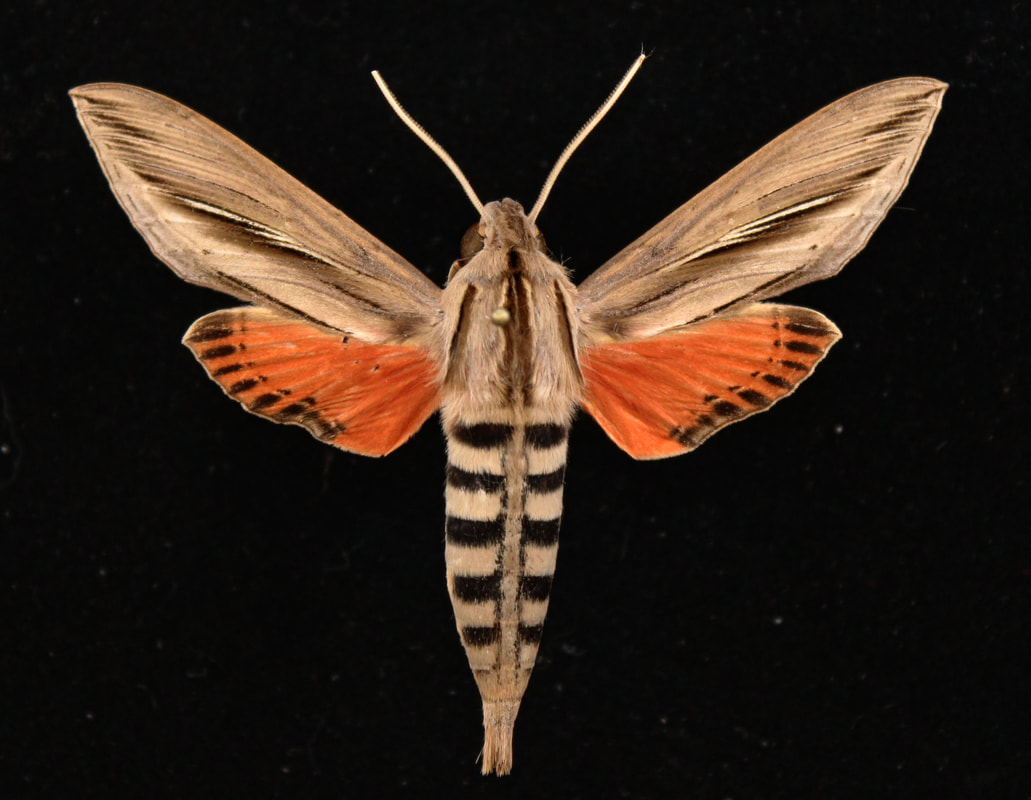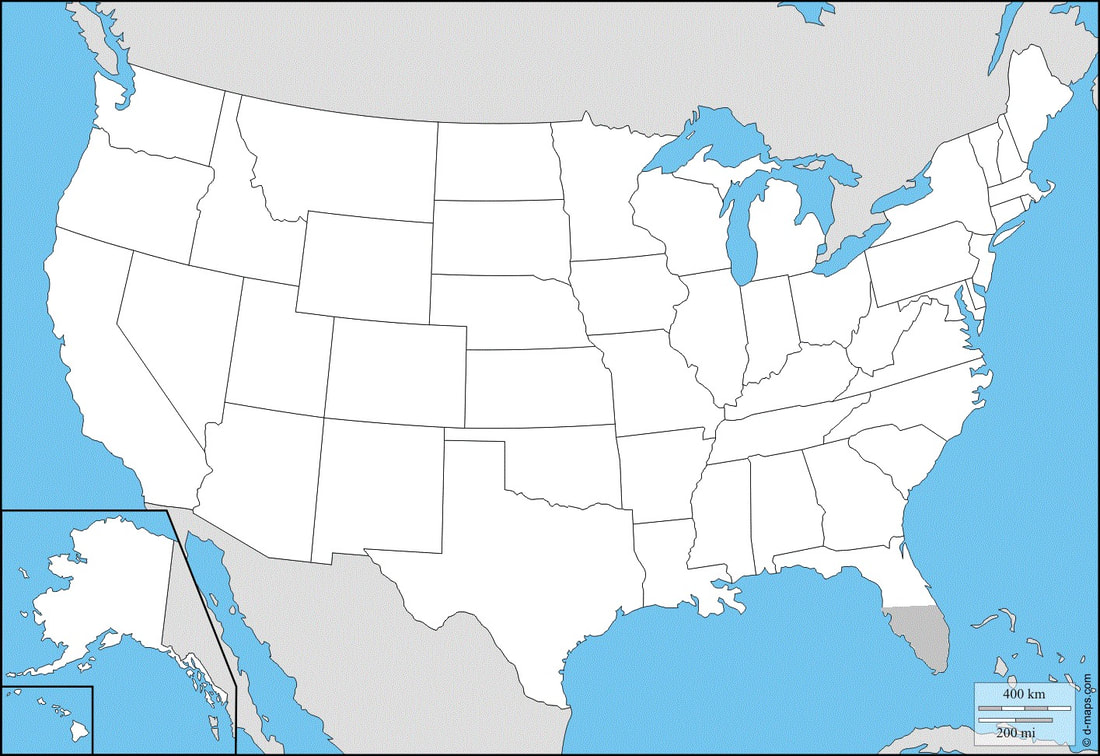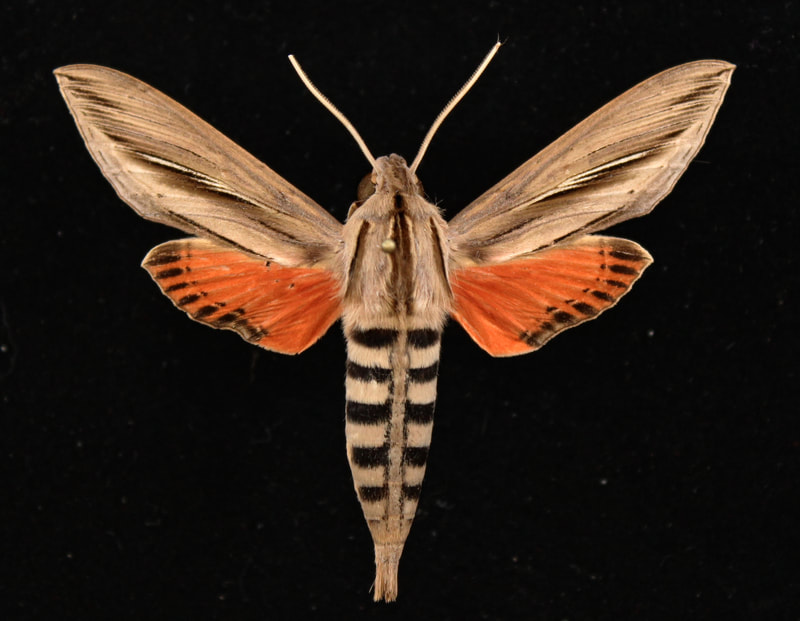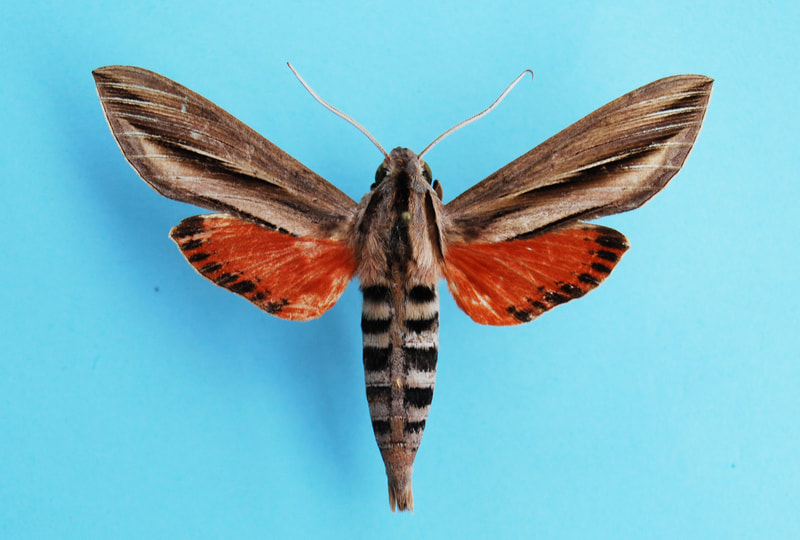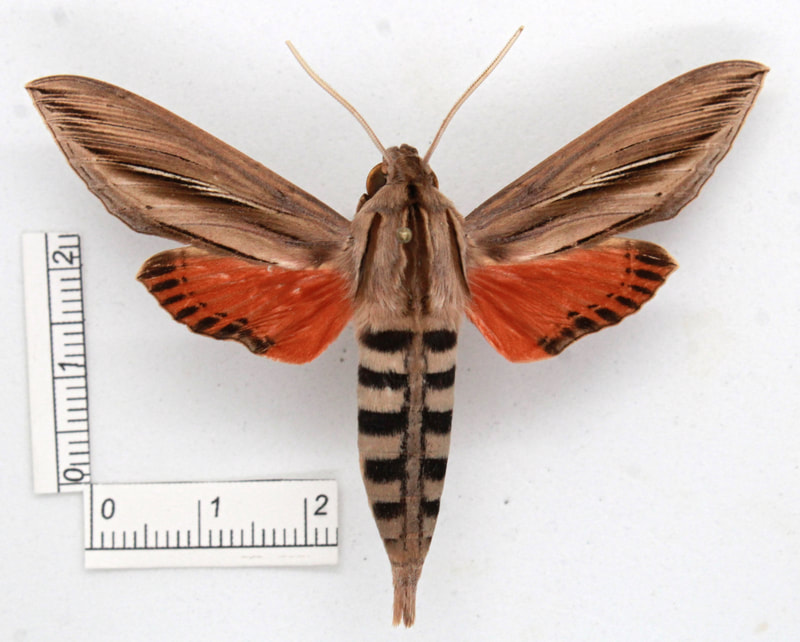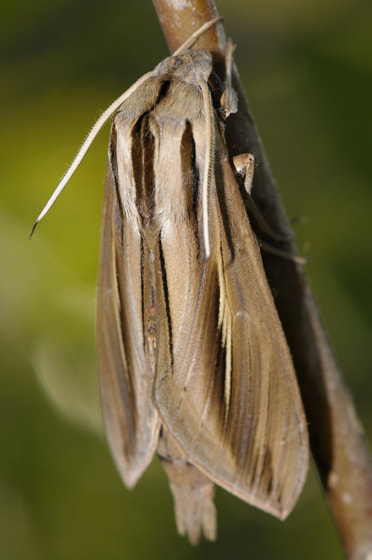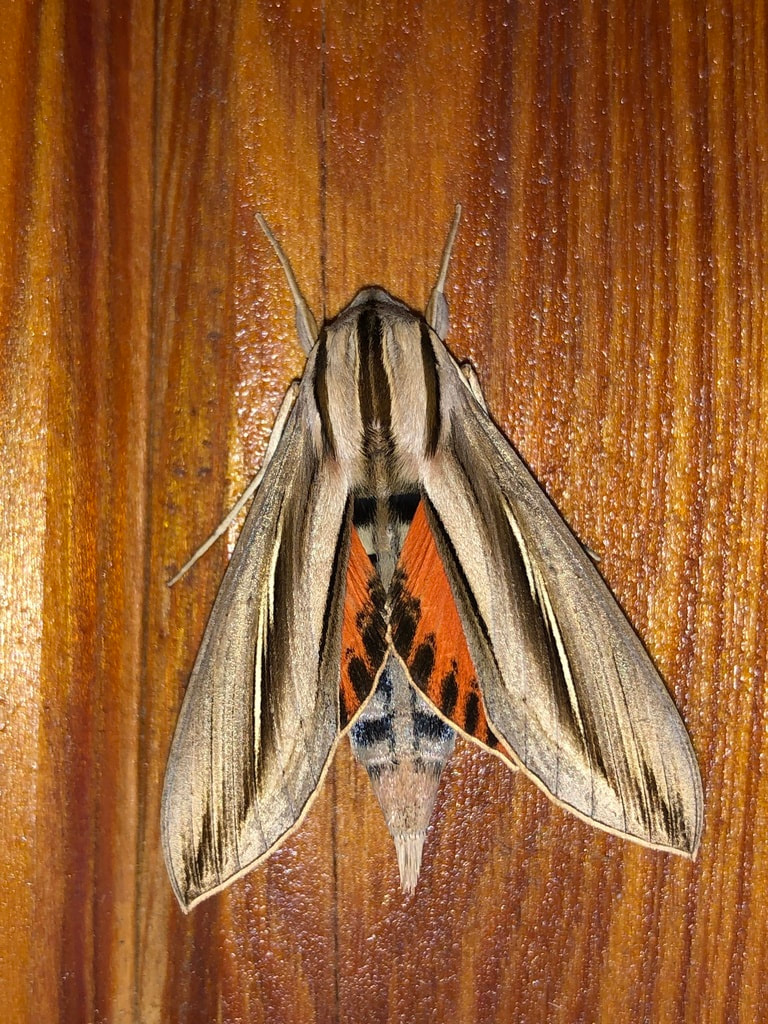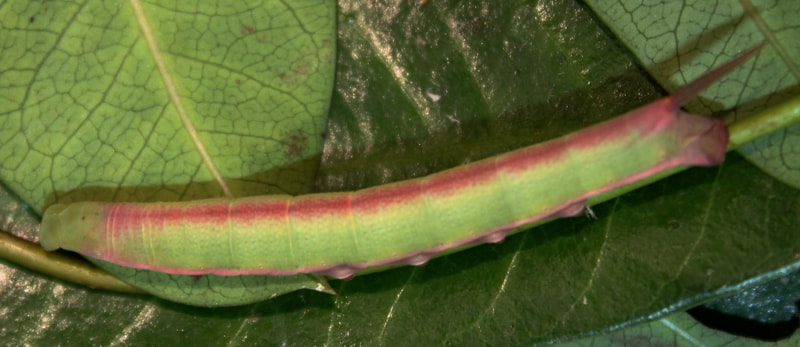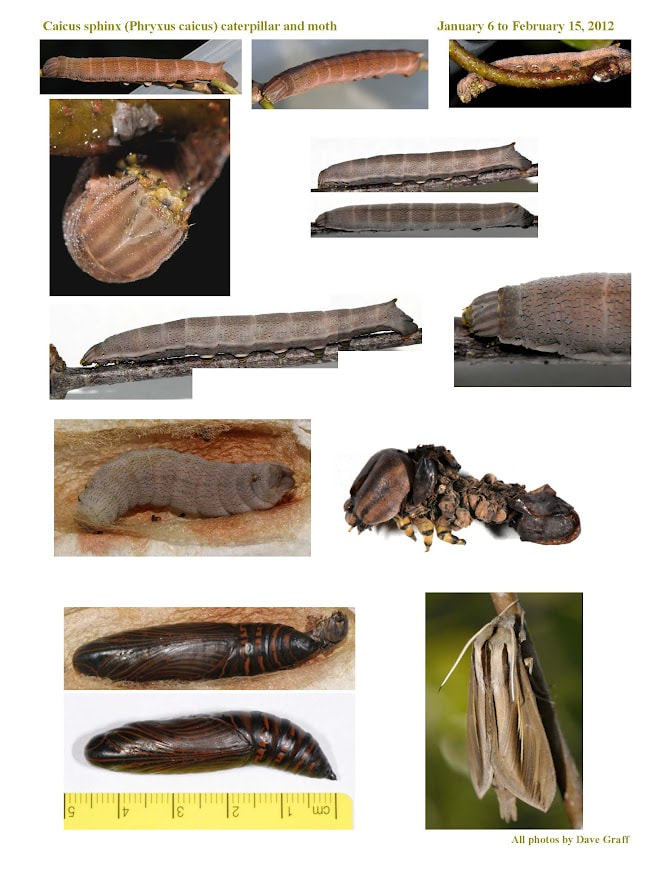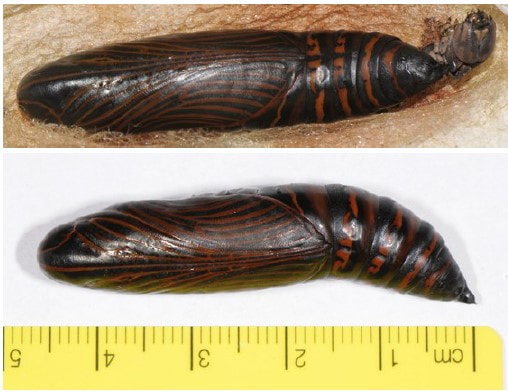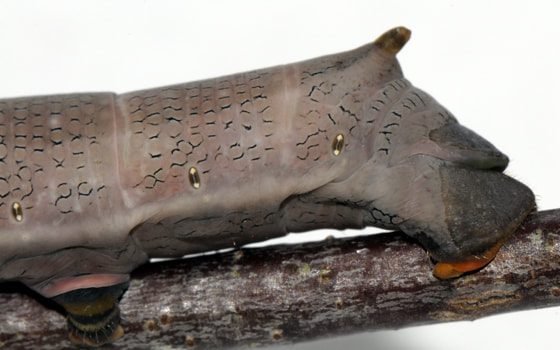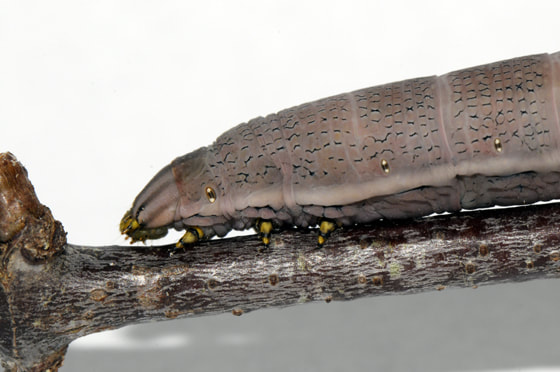|
Common Name: Caicus Sphinx
Ecology and Life History: This moth is active throughout most of the year in Southern Florida. Tuttle notes that the most records are from August through November (2). This species is attracted to light. Bait is likely an ineffective method of attracting this species. This moth is not sexually dimorphic, though females tend to be slightly larger than males. Eggs are laid on the leaves and stems of hostplant, in Florida, this is Mangrove Rubber Vine (Rhabdadenia biflora). The larvae feed singly, usually on the undersides of leaves when they’re younger. Older larvae consume pairs of leaves before moving up the vine. They will often rest on the vine, rather conspicuously (2). Larvae can be green or brown in color, but adult maculation is the same. Habitat and Searching for Larvae: This species prefers Mangrove Rubber Vine (Rhabdadenia biflora) in Florida. It is possible other plants in the Apocynaceae could be utilized. Since this is a vine, larvae can be found virtually anywhere on it. Examining leaves, particularly ones with holes in them or areas where two leaves have been eaten to the petiole is a good starting place. This species is found only in Coastal Mangrove Swamps where its hostplant grows. Larvae can be found throughout the year, though there is likely a peak from October through December. It is unknown whether this larva would fluoresce under UV light. Rearing Notes: {COMING SOON} Host plants: Click here to load this Caspio Cloud Database
Cloud Database by Caspio |
Adult Description
This is a medium sized moth with forewing lengths ranging between 33-37mm (2). The forewings are brown-gray with a white streak in the center. Superficially it resembles the males of Erinnyis ello. The hindwing is red with a dotted black edge, in E. ello, the edge of the forewing is a solid black color. The abdomen is checkered black and gray with a gray line down the center. Larval Description L5: This larva can be brown or green with several white longitudinal stripes. The dorsal region of the larva is darker in color. The spiracles are small and black, and there are no diagonal stripes near them. The caudal horn is extremely reduced in the final instar, leaving only a small nub of a horn. The anal plate can be quite colorful, with shades of red and blue in the brown form larva. |
The gallery to the left contains photos of Phryxus caicus adults. If you have a photo that you would like to submit to us, please contact us.
The gallery to the right contains photos of Phryxus caicus larval and pupal stages. If you have a photo that you would like to submit to us, please contact us.
The gallery to the right contains photos of Phryxus caicus larval and pupal stages. If you have a photo that you would like to submit to us, please contact us.
